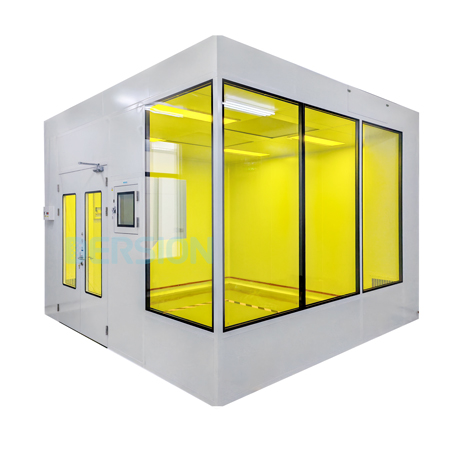I would like to know the actual number of Class D clean areas, that is, the different levels of clean areas in GMP (Good Manufacturing Practice) and their corresponding clean levels. The following is an explanation of the cleanliness levels corresponding to each clean area level:
A High-risk operation area: This is the area with the highest cleanliness requirements and is usually used for critical aseptic operations such as graded areas, aseptic assembly or connection operations. It uses FFU to maintain environmental conditions and ensure uniform air supply with wind speeds between 0.45m/s±20%. The cleanliness of Class A area is equivalent to that of Class 100 clean area, and its scenic environment requirements are more stringent.
Level B: This is the background area where the Level A high-risk operation area is located and is used for high-risk operations such as aseptic preparation and filling. Class B clean area is also equivalent to Class 100 clean area, but its requirements are slightly lower than Class A.
Level C: This is a less important clean operating area in the production of sterile pharmaceutical products. Class C clean area is equivalent to Class 10,000 clean area, and its cleanliness requirements are lower than Class A and Class B.
Level D: It is also a clean operating area in the production of sterile drugs, but its importance is relatively lower. Class D clean areas are equivalent to Class 100,000 clean areas and have the lowest cleanliness requirements among these classes.
Regarding the distinction between dynamic and static data, there is indeed such a distinction between levels A, B, C, and D in GMP. Dynamic data refers to environmental parameters measured during operation, while static data refers to environmental parameters when there is no operation activity. However, the traditional classification methods of clean areas of Class 100, Class 10,000 and Class 100,000 are mainly based on cleanliness standards and do not strictly distinguish between dynamic and static data. To sum up, both Class A and Class B clean areas are equivalent to Class 100 clean areas, but Class A has higher clean environment requirements: (Class A is equivalent to Class 10,000 clean areas; Class D is equivalent to Class 100,000 clean areas, and Class A is equivalent to Class 100,000 clean areas. The distinction between dynamic and static data mainly exists in the clean area classification of GMP, rather than the traditional cleanliness classification method.
Post time: Jun-27-2024

